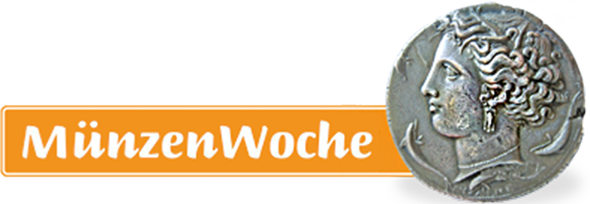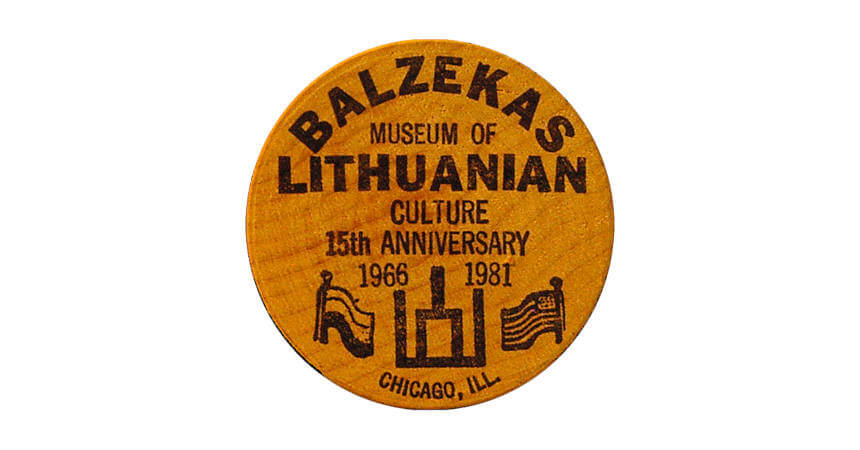Balzekas Museum of Lithuanian Culture
Wenn es kein Logo gibt, wird diese Spalte einfach leer gelassen. Das Bild oben bitte löschen.
(Dieser Text wird nicht dargestellt.)
6500 S. Pulaski Rd.
Chicago IL 60629
Tel: +1 (773) 582-6500
Öffnungszeiten:
Mo-Sat: 10 am – 4 pm
Sun: 12 pm – 4 pm
The Balzekas Museum of Lithuanian Culture is the creation of Stanley Balzekas, Jr. who founded the Museum in 1966 in a building next to his car dealership, and has been at its current location since 1986. Of the exhibits relating to Lithuanian coins and stamps, many were acquired from the collection of Dr. Alexander M. Rackus (18931965), a well-known local physician and historian.
Coins
This covers Lithuania’s history, first as part of Poland from as early as 1492 with the half-graöis of Grand Duke Aleksandras minted in Vilnius plus other specimens from the 16th century. Mint sets and commemorative coins from both pre- and post-Soviet independent Lithuania are included.
Paper Money
Exhibits relating to the history of Lithuanian paper money are shown. One is about the notgeld from the port city of Kaipeda, also known as Memel (Memelburg), which was part of Prussia from the 15th century until 1919. Specimens are shown of the first independent Lithuanian banknotes dated 1922 in both the temporary series printed in Berlin and the permanent series, although initially printed in Prague, but were later printed in England.
During World War II when Germany invaded Lithuania, ration paper money, denominated in punkte, was used. Many Lithuanians were in displaced prison camps such as Augsburg and Scheinfeld after the war, which had their own coupons for purchasing goods at the camp canteen, some of which are on display.
Gaining independence in 1991 from the breakup of the Soviet bloc, Lithuania issued temporary „talonas“ notes at par with the Russian ruble for the transition from the ruble to the litas monetary system. There are examples of 0.10-, 0.20-, 0.50-, and 1-talonas notes. Also on display are the first 1991 series of banknotes printed under the litas monetary system placed into circulation in 1993.
Lottery Tickets, Tokens, and Medals
There is a nice display of lottery tickets, starting with Lithuanian tickets from the early 1930s. During their wartime occupation of Lithuania, the Germans also issued lottery tickets, in Reichmarks with the 1944 date. Also shown are Soviet Union lottery tickets during the 1960s denominated in kopecks.
With churches as the cornerstone of the Lithuanian community, ethnic organizations such as the Society of St. Stephen or the Society of All Saints issued tokens, often 5¢, which were good for a purchase.
One display case is devoted to the medals of Petras Rimöa (1881-1961), Lithuania’s most outstanding medalist whose many designs reflect patriotic themes.
Lithuanian Orders and Decorations
Examples of all three of Lithuania’s orders and decorations are exhibited. The Order of the Cross of Vytis is the highest military decoration for valor. The Order of Vytautas the Great is given for outstanding civil or military merit but has not been restored in present-day Lithuania. The example of the 3rd Class Order on display was awarded to Dr. Rackus for his contribution to Lithuanian culture. The Order of Grand Duke Gediminas is awarded for outstanding civil merit. In recogn
Lithuanian community, Balzekas, the Museum’s founder, was awarded the 3rd Class Order of Grand Duke Gediminas personally by the Lithuanian President Algirdas Brazauskas in 1996 and both the badge and neck ribbon are on display.
Victor David Brenner
One display is devoted to a Lithuanian who has had a lasting impact on United States numismatics-Victor David Brenner. Easily recognized by his initials V.D.B., Brenner, a Jewish immigrant, designed Lincoln’s bust for the 1909 penny at the request of President Teddy Roosevelt, which has remained with us for more than 100 years.
This text was written by Howard M. Berlin and first published in his book Numismatourist in 2014.
You can order his numismatic guidebook at Amazon.
Howard M. Berlin has his own website.









